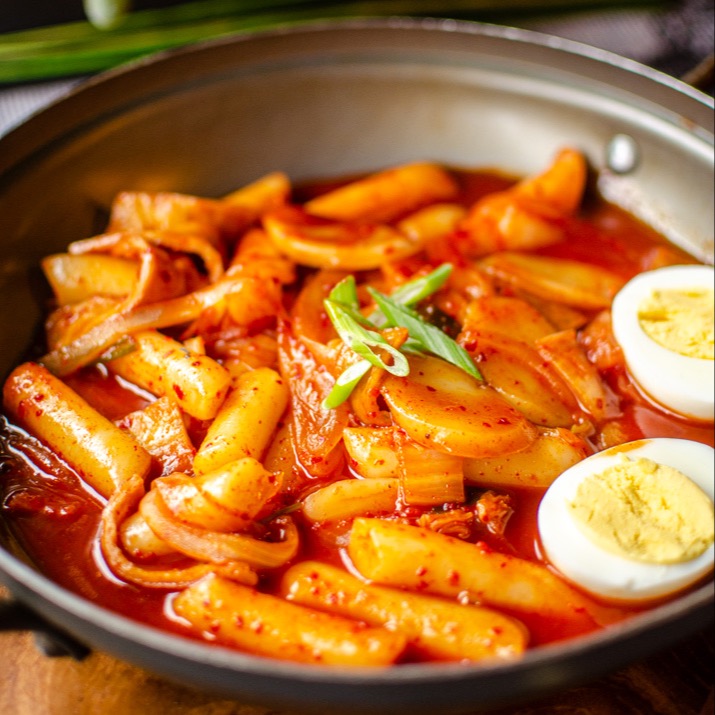Here are the Best Asian Restaurants in Chicago

Asian American Pacific Islander Heritage Month is wrapping up, but our love for Asian food isn’t just limited to one month. We will forever be committed to amplifying minority-owned businesses while sharing authentic Asian foods with customers like you. Although our roots are in Chinese food, we wanted to spotlight other Asian cuisines you can find on Chowbus. With 50 countries in Asia alone, the variety of cuisines, cooking styles, and flavor profiles within Asian food are endless. Today, we will cover three Asian cuisines: Japanese, Thai, and Korean. Warning - this article might make you hungry.
Japanese Cuisine
As home to the most Michelin 3-star restaurants in the world, there’s no question that Japan has one of the most distinct and recognizable cuisines in the world. Japanese cuisine emphasizes seasonal ingredients, fermented side dishes, and artistic presentations. Compared to Western meals, Japanese meals center around one main dish and multiple side dishes. A typical meal includes rice, meat or fish, and vegetables with pickles and miso soup as a side dish. Popular dishes include sushi/sashimi, ramen, tempura, Okonomiyaki, and soba noodles.
The difference between sushi and sashimi is sushi has rice while sashimi does not. Sashimi is generally raw fish or seafood, but sushi ingredients can either be raw or cooked. Both are served with soy sauce, wasabi, and pickled ginger.

Where to find the best Japanese food in Chicago:

Thai Cuisine
Cue the aromas of fish sauce, herbs, and lemongrass - we’re talking about Thai food. Thai food is all about balance, fresh ingredients, and pungent flavors. Characterized by five flavors, salty, sweet, sour, bitter, and spicy, Thai cuisine is anything but one-dimensional. Each region has its distinct flavor profiles and cooking styles. In addition to these distinguished flavors, Thai food is commonly eaten family-style and with minimal utensils. Don’t even think of asking for chopsticks!
Flavor profiles of regions:
Northern: bitter, sour, and not as salty as other regions
Northeastern: not too spicy or salty and usually grilled or boiled
Central Thailand: sweet/savory flavors and home to more well-known Thai dishes. Dishes are influenced by Bangkok and spotlight noodles, soups, and seafood.
Southern: spicy, salty, and intense flavors. Common ingredients include fish sauce, seafood, and coconuts. Nearly all meals are served with fresh herbs, vegetables, shrimp paste, chili, garlic, and lime.
We all love Pad Thai, but here are other popular dishes you need to try:
Tom Kha Soup: spicy and sour soup with shrimp, vegetables, and coconut milk
Spicy Green Papaya Salad: also known as Som Tum, this salad has shredded raw papaya, garlic, chilis, and cherry tomatoes
Red curry: a mild curry made with meat, red curry paste, coconut milk, and kaffir lime leaves
Laap: a common Northeast dish made with minced meat, roasted rice powder, lime juice, fish sauce, and herbs - served with rice.

Where you can get the best Thai food in Chicago:

Korean Cuisine
Korea is home to K-POP music, breathtaking scenery, and a global food scene. From classic dishes to innovative street food, Korean food is consistently pushing boundaries while maintaining traditions.
Like many other Asian countries, rice is a staple in any meal. A typical Korean meal consists of rice, a main dish, soup, and multiple side dishes called “banchan”. There are multiple side dishes served, however, we have to give the spotlight to kimchi. Kimchi is fermented spicy cabbage with a sour and tangy flavor - a perfect complement to any meal. The history of kimchi dates back to 37 BC when refrigeration was limited, causing people to ferment their ingredients. Kimchi is also not just limited to cabbage; there are over 200 different varieties. Most Korean families have a separate refrigerator in their home just for kimchi alone. You'll also find these common ingredients in any Korean home: Doenjang (fermented bean paste), Gochujang (fermented chili paste), and Gochugaru (Korean chili powder).
Common Korean dishes include:
Bibimbap: rice bowl mixed with vegetables, meat, an egg, and gochujang sauce.
Bulgogi/ Korean BBQ: Bulgogi is marinated beef, common in many dishes like Korean BBQ. Korean BBQ is a great meal to share with friends and family since everyone can cook their preferred meats, vegetables, and seafood.
Kimchi Jjigae: One of the most common Korean stews made with kimchi, meat, tofu, and herbs. Usually served in a hot stone pot.
Galbi Tang: clear soup made with beef short rib, radish, onions, and other ingredients.
Tteokbokki: These spicy rice cakes are one of the most popular Korean street foods. They are tossed in a spicy gochujang sauce and sometimes mixed with fish cakes, cheese, or eggs. You can find these everywhere from the night street markets to local restaurants.

Where to find the best Korean food in Chicago: type: entry-hyperlink id: 54jlrXzSbrjY3tp8hnufAW

If you made it this far and didn’t get hungry, we applaud you. But if your stomach is growling, we got you covered with Chowbus. You can order from all of the restaurants we mentioned in this article, and many more, on Chowbus. Some restaurants also qualify for restaurant bundling so you can mix and match various types of cuisines - maybe order dishes from all three cuisines we mentioned! Regardless of your food preferences, we hope you feel inspired to try new Asian restaurants in Chicago. Happy feasting!
